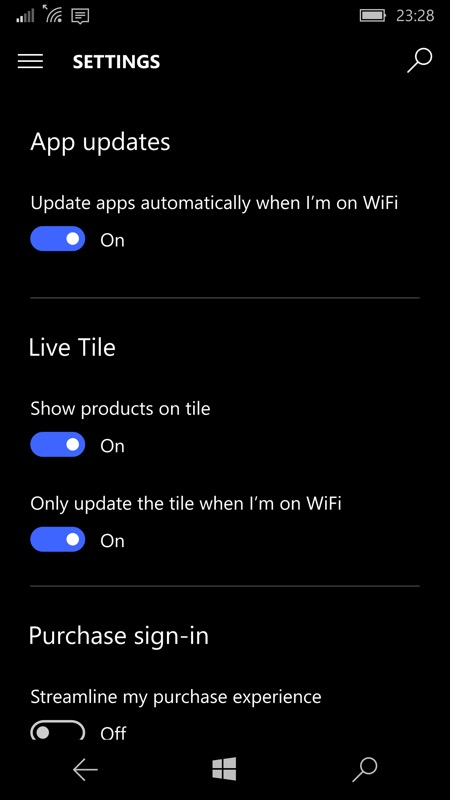The scenario is very, very common. You take a peek at a friend or relative's iPhone or Android device and see them in the relevant store for their OS (App Store or Play Store). On the iPhone, down at the bottom right, under 'Updates', you see a little flag showing '25' updates waiting. No doubt some of these are gimmicky extra features and upgrades, but I'll bet that a lot of these fix serious issues, including those related to security. And all the while the updates are ignored, they're living with potentially buggy and vulnerable apps and games. Now, if you know where to look in the global iOS Settings app, you'll find that 'Updates' can be toggled on under 'Automatic Downloads' - but this isn't trivial to find and I'll bet that 90% of iPhone users never get to it.


Updates waiting for me to manually kickstart them on both iOS 9 (see the little red number, bottom right) and Android 7.0...
Similarly on Android, where what you see depends on which devices you have, which manufacturer 'skin' is in use, and how your Play Store app is set up. In some cases, if you're lucky, there's an 'Updates available' line in the notifications shade, but the majority of people either swipe all that stuff away without paying attention or, in a surprising number of cases, don't even know that you CAN swipe down to show notifications. And, if they do venture into the Play Store then they'd have to tap on 'My apps & games' in order to see any waiting updates and would then need to tap on 'Update all'. Yes, there's a setting to turn on that will enable 'auto-updating over Wifi' but in my experience this is often not enabled by default. So we end up in the same position as on the iPhone, with regular users often lagging behind and with old versions of applications.
Regardless, things are done right, I contend on Windows, whether desktop, WP8 or Windows 10 Mobile, with the default for regular, novice users being to auto-update everything (over Wi-fi, but still on full automatic). In fact, this default is so significant that I have to remember on new devices at AAWP Towers to go into Settings in the Store app and disable the auto-updating in order that I can spot which application updates are new each day!

The default on Windows Phone and W10M - note that automatic downloads/updates are turned ON...
Surely this is how a software system should be set up, with updates pushed by developers and manufacturers, arriving, downloading and installing automatically, in the background with the user blissfully unaware that anything's going on (hopefully) - all they know is that their smartphone is, if anything, working better than it did the previous week and much better than it did the previous month. And, depending on the applications getting updated, perhaps with the odd 'Here's what's new' animation or info pane to inform and to (again hopefully) wow.
With my IT dept hat on, of course, auto-updating is anathema - updates might introduce new bugs and incompatibilities into previous stable computers and phones. They might. But far more worrying is a security vulnerability that might get discovered and patched by a developer, only for much of the OS or app's userbase to stay on the old, insecure version because of inertia and the lack of a way for the developer to 'push' fixes out to the world.
So, in a world where it's apparently trendy to bash Windows Phone and Windows 10 Mobile for all the things the platforms lack (much of which is misplaced IMHO), let's celebrate something which Microsoft definitely got right. The way in which Joe Average, the user of (say) a Lumia 640 is kept up to date without him having to lift a finger, and never being left vulnerable to bugs and insecurities.
Indeed, with applications and games being updated as needed in the background, there's a real sense that your smartphone is getting smarter every day. In fact, there's far more that's positive about the way in which Windows 10 Mobile has been conceived and launched - but I'll save some of that for a future editorial(!)
